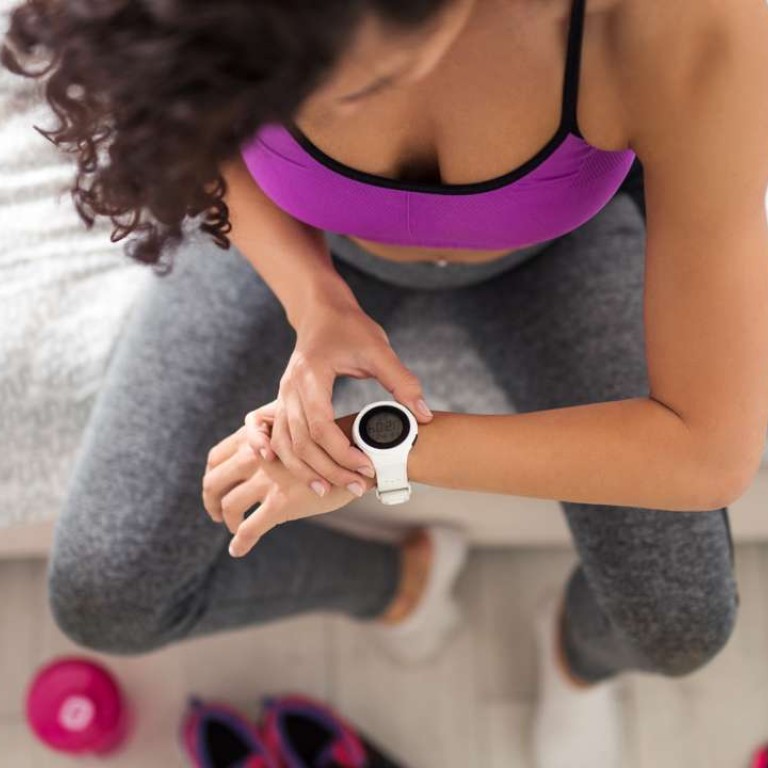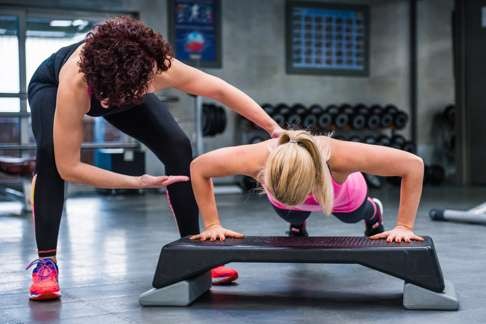
Wearable tech tops global fitness trend poll for second year running
American College of Sports Medicine’s annual survey of health and fitness professionals worldwide names wearable tech as top trend for 2017, with bodyweight training in second place
If you feel naked without a fitness tracker on your wrist, you’re not alone. Wearable technology is a growing trend – the hottest fitness trend, in fact, for 2017, according to the American College of Sports Medicine (ACSM). It remains top of the list for the second straight year in the organisation’s “Worldwide Survey of Fitness Trends”, an annual poll that was completed by more than 1,800 health and fitness professionals worldwide this year.

“Technology is now a must-have in our daily lives. Everyone can easily count steps taken or calories burned using a wearable device or a smartphone,” says Walter R. Thompson, lead author of the survey and associate dean in the College of Education & Human Development at Georgia State University in Atlanta.
Examples of wearable tech include fitness and activity trackers like those from Misfit, Garmin and Fitbit, as well as the Apple Watch. But also trending now, Thompson says, are other devices like smart glasses, smart clothes and interactive textiles.
“It is unpredictable how wearable technology will advance through the next decade,” he says.
Hong Kong fitness experts agree with the ACSM’s top trend – although they recommend taking the results with a pinch of salt.
“The ACSM has always provided great guidance on trends in the fitness industry. Certainly we agree that wearables are exploding among fitness enthusiasts. However, right now people abandon them almost as fast as they buy them,” says Marco Ferdinandi, regional fitness operations director of Pure Fitness.

“We expect this to improve in 2017 and wearables will be a big trend – but not one that gets people in better shape just yet. We believe that is still a few years off. People are using them more than ever but still rely more on fitness professionals to help make a real change in their life.”
Heather Thomas Shalabi, founder and director of Flex Studio, predicts the wearable tech trend to complement the other hot fitness trend of bodyweight training (which was second in the ACSM survey).
“We are going to see wearable high tech toys to track, feedback and guide, and simplified functional movement workouts which involve moving body mass around against gravity with little or no equipment,” says Shalabi. “The fancy equipment will be on your wrist, but what’s under your feet will be the simple, solid ground as a gravity-resisted playground.”
Related to the outdoor playground, Shalabi predicts the sport of parkour, which turns the urban environment into a fun obstacle course, will be increasingly popular. “It’s so cool, so hard, and develops both abdominals and minds of steel,” she says.
Along a similar flavour of mirroring movements in daily life – what experts call functional fitness – strongman training will also be a hot trend for 2017. Kahei Tse, personal training manager at Pure Fitness, explains: “Strongman training delivers through compound movements like lifting, carrying, gripping, dragging and pushing. Expect exercises like prowler/sled push and pull, farmer’s carry, tire flip, dead lift, squat, overhead press and so on. The focus is on intensity and emphasis on maximal strength.”

Wellness for the older population is another trend both Tse and Shalabi foresee. “I predict a rise in classes targeting the specific needs of the 50 to 70 age group, such as high-intensity interval training [HIIT] classes to stimulate bone density, neural cross-patterning to keep reflexes sharp, and ankle/knee/hip range-of-movement-focused exercises to prevent injury and keep folks on the slopes well into the golden years,” Shalabi says.
In the ACSM survey, HIIT and educated, certified and experienced fitness professionals also remained highly ranked while boot camp, Zumba and other dance workouts, indoor cycling and Pilates continued to slip as international trends.
Overall, the local experts agree that what will be in vogue for 2017 are sustainable fitness programmes rather than workout fads.
“People want a workout they can do that is beneficial to their lifestyle now and long-term,” says Ferdinandi. “They will be focusing a lot more on recovery and sensible programme design, and pushing hard will be part of an overall plan. Trends will be less about how hard you can train in one session and more about designing a programme that brings the best out of you over time.”
Shalabi suggests people follow what works for their own body and mind rather than trends.
“If you find tracking every step you take from a device on your wrist makes you walk more, then by all means, invest in that technology. If it depresses you every time the tracker shows a downturn in performance, take it off,” she says. “Keep moving with regularity, set goals, and frequently throw new challenges at your neuromuscular system to see and feel results in 2017.”
10 hottest fitness trends for 2017 – the full list
The ACSM surveys health and fitness professionals around the world annually on the top fitness trends for the coming year. This year, more than 1,800 industry experts were polled and they picked the following 10 fitness trends for 2017 (previous year’s ranking in brackets).
1. Wearable technology (1): includes activity trackers, smartwatches, heart rate monitors and GPS tracking devices.
2. Bodyweight training (2): not limited to just push-ups and pull-ups, this trend allows people to get “back to basics” with fitness.
3. High-intensity interval training (3): HIIT involves a circuit of short bursts of activity followed by a short period of rest or recovery, performed in less than 30 minutes.
4. Educated and experienced fitness professionals (5): it’s important to choose professionals certified through programmes accredited by the appropriate authorities.
5. Strength training (4): an essential part of a complete exercise programme (along with aerobic exercise and flexibility) for all physical activity levels and genders.
6. Group training (new): designed to be motivational and effective for people at different fitness levels, with instructors using leadership techniques that help individuals achieve fitness goals.
7. Exercise is medicine (new): a global health initiative focused on encouraging primary care physicians and other health care providers to include physical activity when designing treatment plans for patients and referring their patients to exercise professionals.

8. Yoga (10): practised for both health and relaxation, styles include Power Yoga, Yogalates, Bikram, Ashtanga, Vinyasa, Kripalu, Anurara, Kundalini, Sivananda and others.
9. Personal training (6): education, training and proper credentialing for personal trainers – all have become increasingly important to the health and fitness facilities that employ them.
10. Exercise and weight loss (9): weight loss programmes are increasingly incorporated with regular exercise and caloric restriction for better weight control.

